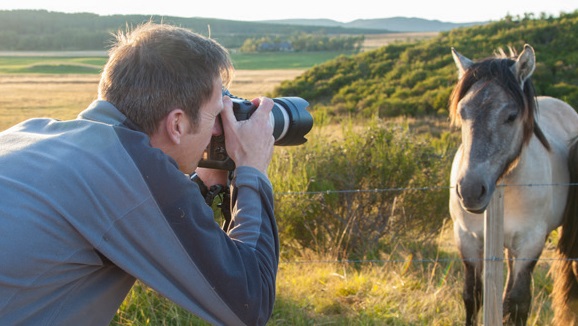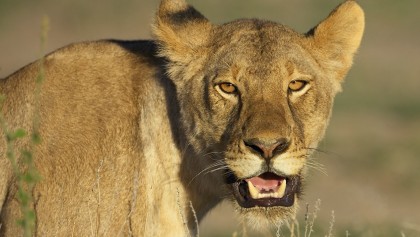Wildlife photography tips
Wild portraits

Whether you're a wildlife enthusiast, own a pet or make an occasional visit to the zoo, there's no doubt that animals make great photographic subjects.
And there is arguably no better way to shoot them than in glorious close-up. Portraits not only reveal every facial feature of the animal in great detail but also show its character in a way a more distant view can never achieve.
Done well, animal portraits delve right into the soul of the subject; they make an emotional connection with the viewer through compelling eye contact; and they demand attention.

Animal crackers
First, you need to find a suitable subject – but with animals all around us in some shape or form, it shouldn't prove too difficult to find a likely candidate.
The main criterion is a willing subject. You'll have to get pretty close for a good portrait, so the animal needs to be approachable – and to hang around long enough for you to bag some shots.
On the whole, animals who are accustomed to people are going to make the best subjects – pets, farm animals, residents of parks and zoos and the wildlife in your garden.
Of course, you can also take fantastic animal portraits in wildlife reserves and game parks, especially when you're photographing from a vehicle or a hide of some sort. For frame-filling portraits, a telephoto lens is often the best choice.
Sign up for breaking news, reviews, opinion, top tech deals, and more.
A focal length of 200mm or upwards is ideal, as this allows you to work from a reasonable distance. If you're working with your own pet or animals that allow a very close approach, it's possible to create unusual portraits with much shorter lenses or even a wide-angle.
A telephoto lens will result in a blurred background, making the subject stand out well. The reverse is true of a wide-angle lens, where the background will appear more in focus.
This can add another dimension to the portrait and reveal the animal's surroundings, but it can also be a distraction if the background is cluttered.
For an effective portrait, the animal's head and face need to be the main interest, with attention firmly on the subject's eyes. Without good eye contact, the portrait won't have the same impact or appeal.
Compose the shot so the animal's eyes are about one third down from the top of the frame.
Backlighting is also worth trying to give an attractive rim-lit effect. A burst of fill-in flash can be helpful to brighten the face and reveal more detail.
- 1
- 2
Current page: Wildlife photography tips: getting started
Next Page Wildlife photography tips: animal portraits